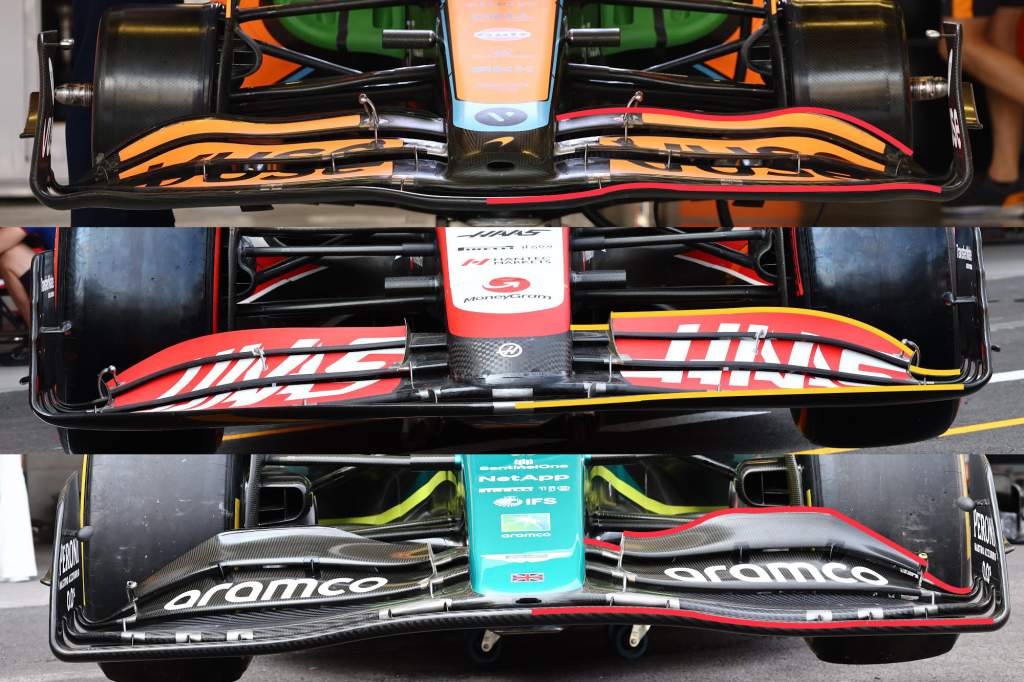Up Next

The front wing of a Formula 1 car is not only one of the most visible aerodynamic components, but also the most significant.
That’s because it is the first part that has to penetrate the theoretically stationary air mass, which is why I often say that it’s a critical part of how the airflow structure is initiated. And it’s that flow structure that the rest of the car has to work with.
As the downforce increases with the speed of the car, it is also critical that the front of the car – the nose, front wing and front tyres – actually penetrate that stationary air mass as opposed to pushing it along in front of it.
For example, let’s say the car is travelling through the air mass at 250km/h, with a theoretical downforce of 2000kg. If it’s pushing some of that mass in front of it at, say, 20km/h, it means the relative car-to-air speed is 230km/h so the downforce is reduced to 1700kg. That’s a big loss.
But if it can be sped up, then it has the opposite effect. It means the flow under the wing is travelling faster than the flow over the top of it and, in effect, this is what the leading edge of the underfloor uses to produce its downforce.
However, it’s not quite as black-and-white as that as that flow travelling under the wing is now thinner from expansion, so produces less downforce.
Every item on the car’s aerodynamic surface, including the tyres, will have this effect of slowing or speeding up the overall flow. That is why every aerodynamic surface is important.
But because the front wing is the first part to affect the airspeed over the rest of the car, it gets priority. However, it also has to produce enough downforce to balance the car in its own right and be adjustable within a small range to allow for changes in what a driver wants in terms of balance.
It’s very easy to produce a front wing that produces more front end when you increase the angle. But because of the flow structure effect, it loses more or less the same amount of rear end. That’s great for a balance change, but doesn’t improve the overall grip so has a minimum effect on laptime.
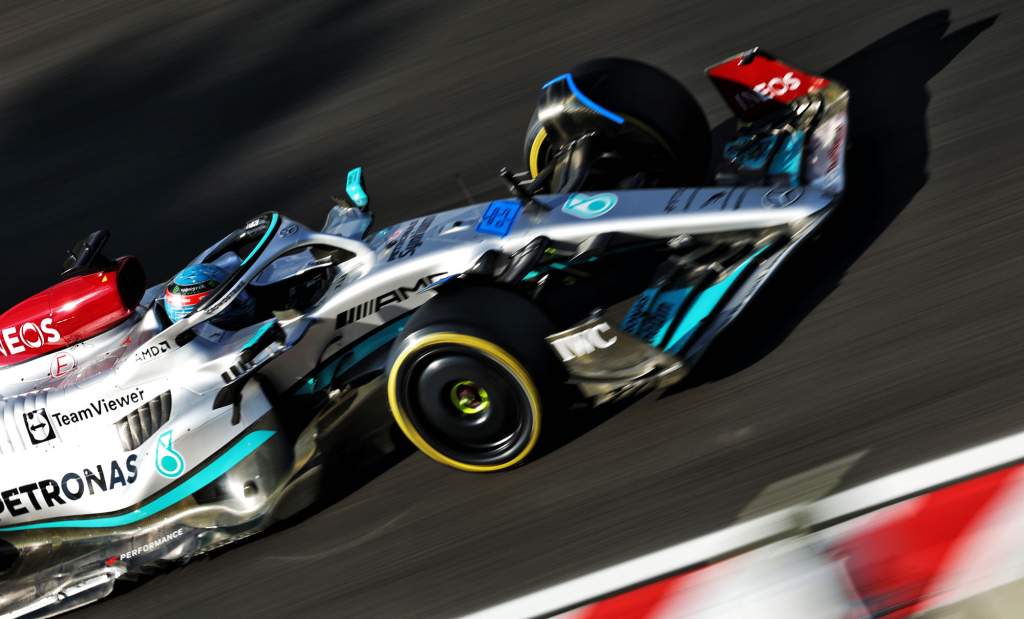
It’s not quite so easy to produce a front wing that, when you increase its angle, gives you more front but doesn’t disturb the rear. But that’s the direction you need to be going in, simply because you get improved balance and a small increase in overall grip.
Hardest of all is to produce a front wing that, when you increase its angle, you get more front and, because of the flow structure effect increasing the air speed over the rest of the car, you also get more rear. So this is ideal and as it is a decent step in overall grip level as well as a better balance you get the best return in laptime.
The worst outcome is a front wing that, when increased in angle, actually suffers some separation problems and loses front load and because of the detrimental effect of the flow structure also loses rear.
Believe me, I have seen them all in my time and I’m pretty sure there are still a few like the latter out there. It’s easy to have a flow structure that works at one level, but when you need to go either side of those settings, the car’s relative performance drops away.
So in constructors’ championship order, let’s take a close look at the front wing assemblies each team ran in Mexico.
I have put a red line (yellow for the Haas) on the leading edge at the flow-separation point, and again on the trailing edge. This is to show the different concept of front wing span loading. The less uniform it is, the more peak loading you will get and potentially the more transfer flow you will get.
Peak loading is when the wing across its span has a lot of shape (increased camber) in it. Because of that, the airflow on the undersurface in that area is being accelerated more than either side of it, so that area will pull airflow from wherever it can, generating transverse flow.
RED BULL
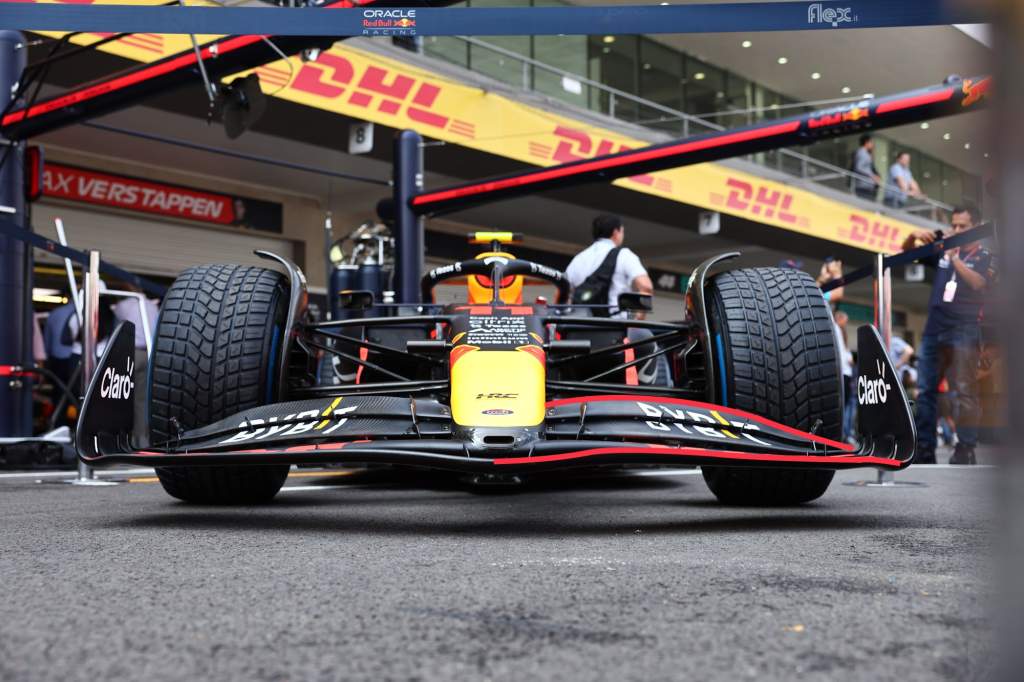
The front wing leading edge and trailing edge are fairly simple.
This will introduce a fairly uniform flow through between the front wheel and the chassis, allowing the underfloor leading edge to be optimised to generate consistent downforce from that area.
Small changes of front wing angle should have very little impact on the flow structure coming off the trailing edge of the front wing.
FERRARI
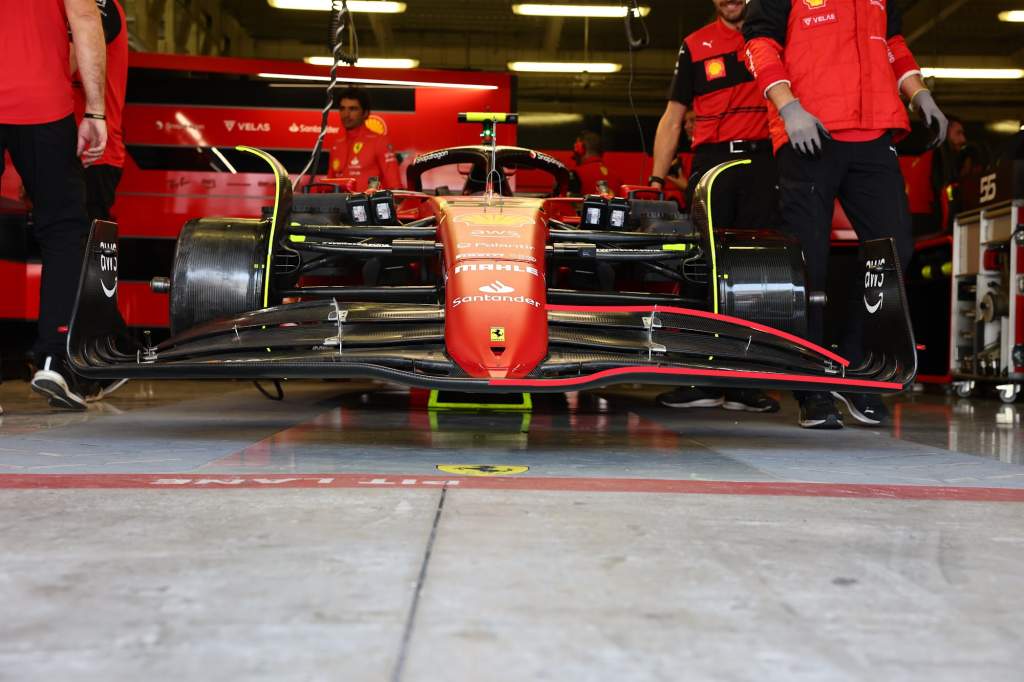
Ferrari is not dissimilar to Red Bull, but its inboard fixed section of wing to the nose is longer.
This means that the adjustable section is shorter so, to get the same balance change as Red Bull, Ferrari will have to increase the angle of the adjustable flap more. This could easily mean that it affects the flow to the rest of the car just that little bit more.
Red Bull has pullrod front suspension and Ferrari has pushrod yet has more or less the same detail of front wing, so the difference is not aimed at optimising the air flow around the pushrod.
MERCEDES
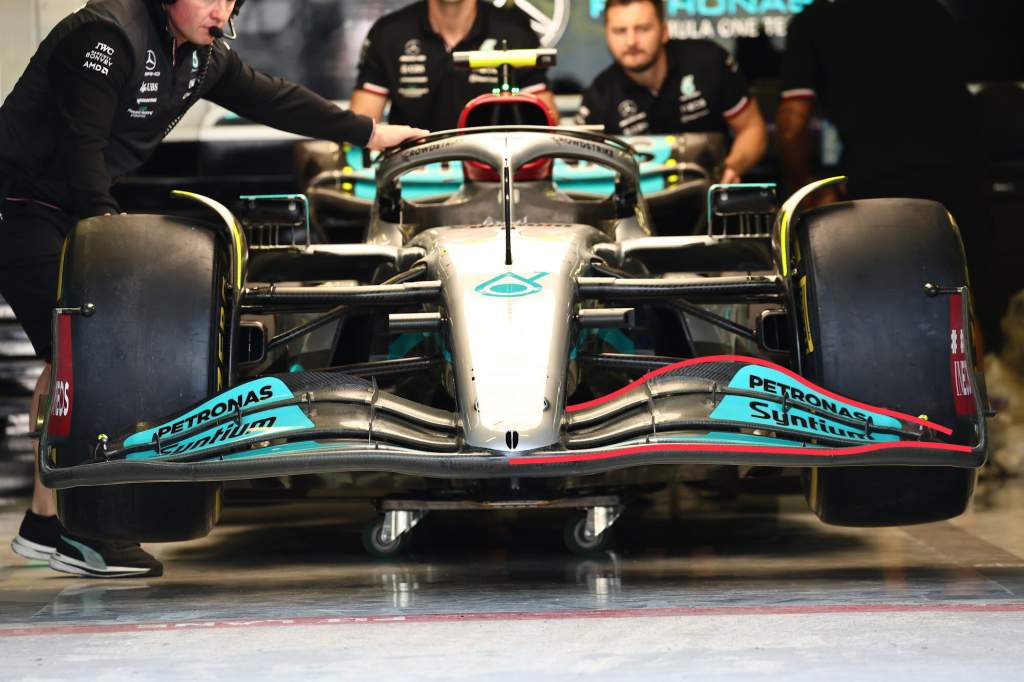
Mercedes’ very different sidepod concept means it’s no surprise to see that the front wing concept is different from its direct competition. Actually, along with its sidepods, the front wing is fairly distinctive compared to all of the other nine teams.
That doesn’t mean it’s wrong as it will be designed to suit the car, but it highlights the fact that the main flow structure heading for the sidepods is very different from the other teams’.
Having such a ‘camel hump’ style front flap trailing edge will generate some transverse flow, but as can be seen with the narrow sidepod inlets further rearward, the weaker flow from that area is being exited through the gap they create.
ALPINE
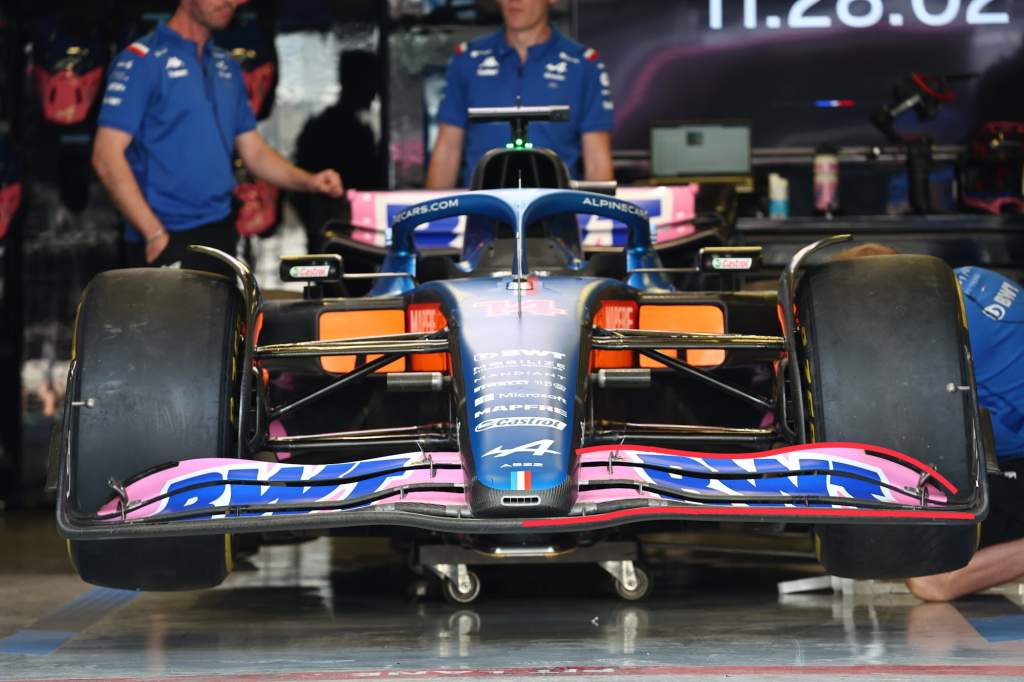
Visually the opposite of the Mercedes, we have the Alpine with reduced camber in the area where Mercedes has increased camber on its front wing.
Alpine also runs a small Gurney flap on the trailing edge of the flap just in front of the tyre. This will help this section of the wing to work more consistently when the front wheels are steered and should produce more front downforce with steering lock to fight the understeer these cars have in slow- and medium-speed corners.
Both have pushrod suspension, so as with Red Bull and Ferrari the wing detail has very little to do with the suspension layout.
McLAREN
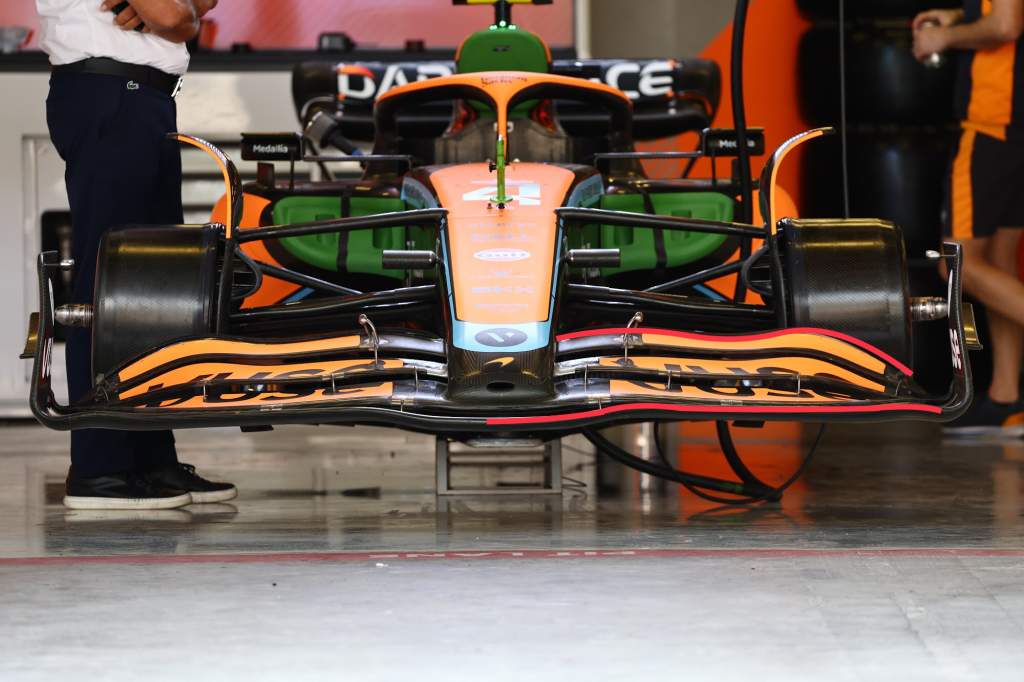
McLaren is similar to Alpine with its rear flap trailing edge detail.
It also runs a small Gurney flap on the trailing edge of the flap in front of the tyre.
ALFA ROMEO
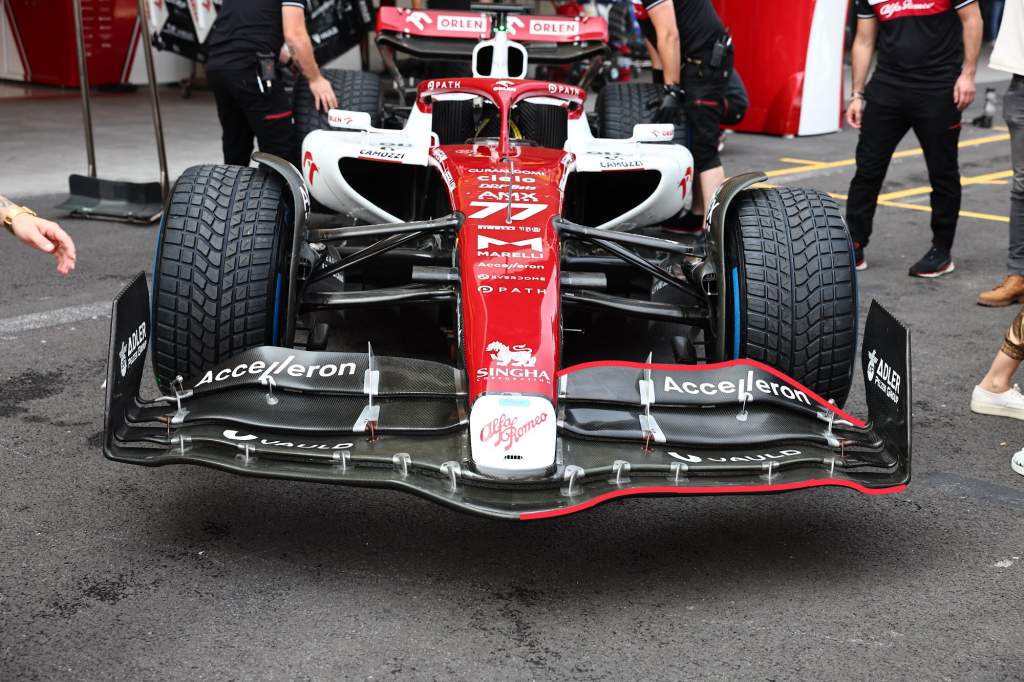
Alfa Romeo is more in line with Alpine and McLaren.
This photograph is from a slightly different angle, so it’s difficult to get a true leading edge or trailing edge profile. But you can see the duck bill section under the nose in more detail and the fact that the forward element is more of a flow conditioner hanging off the second element.
The second element is more of an actual mainplane. Alfa Romeo is not the only one to do this but it’s just that little bit more pronounced on its car.
ASTON MARTIN

Surprisingly, Aston Martin is more in line with the Mercedes front wing philosophy than the others.
You would think that recruiting Dan Fallows from Red Bull as technical director means its front wing would have followed suit after its change in sidepod concept earlier in the season.
After all, the front wing sets up the airflow that feeds those sidepods.
Perhaps it’s not so surprising when you consider that currently Aston Martin uses the Mercedes windtunnel.
Windtunnels and front wings have always been very difficult to get to correlate, to get the same car balance between the model and the full size car there is normally some level of angle offset required. You need to work hard to minimise that offset.
If there is any problem with windtunnel boundary layer control, it will manifest itself in anything that is aerodynamically highly loaded and running close to the ground such as front wings or now ground effect underfloors.
HAAS
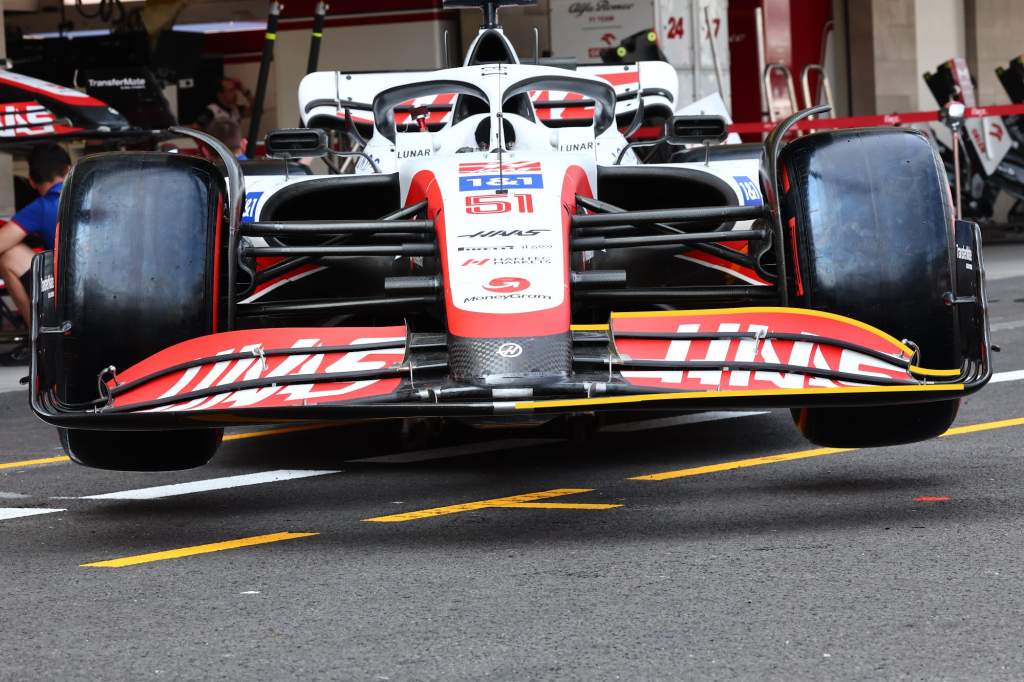
This is similar, albeit not identical, to Ferrari. And that’s not surprising when you consider that they have a close working relationship even though their aerodynamic concept and design work has to be separate.
Haas has stuck with what it calls a high-downforce concept that suits more circuits than not, but by doing this it has suffered in races where other cars have just been that bit faster on the straights.
ALPHATAURI
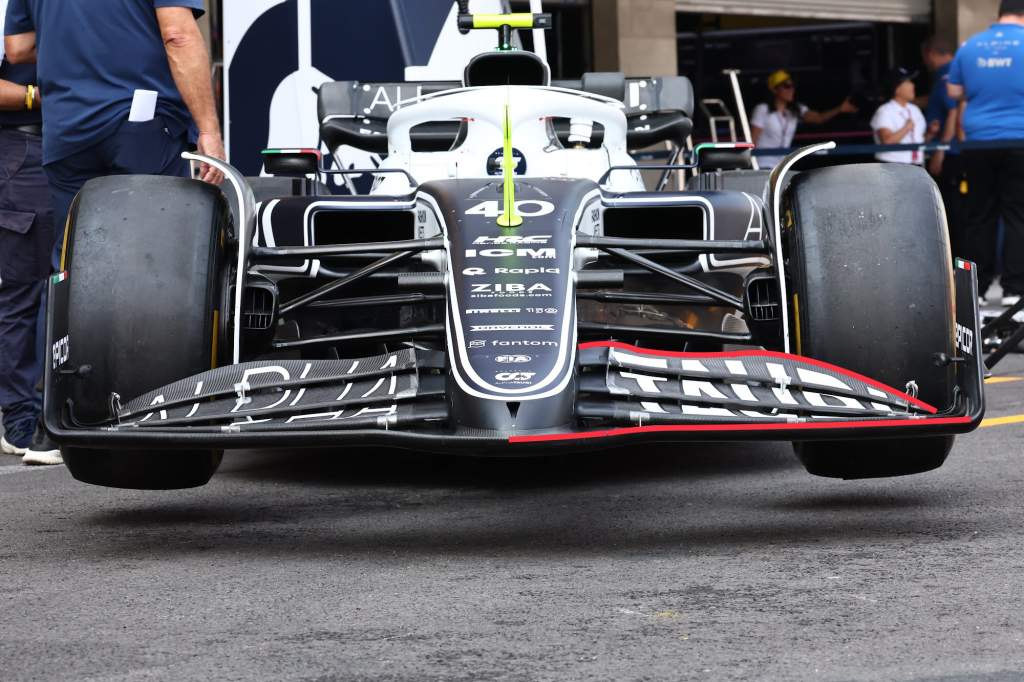
AlphaTauri is in line with the Alpine and McLaren front wing concept more than sister team Red Bull.
AlphaTauri follows its own path as far as aerodynamics are concerned, which is nice to see but sometimes I’m sure this must be that bit frustrating for the drivers.
WILLIAMS
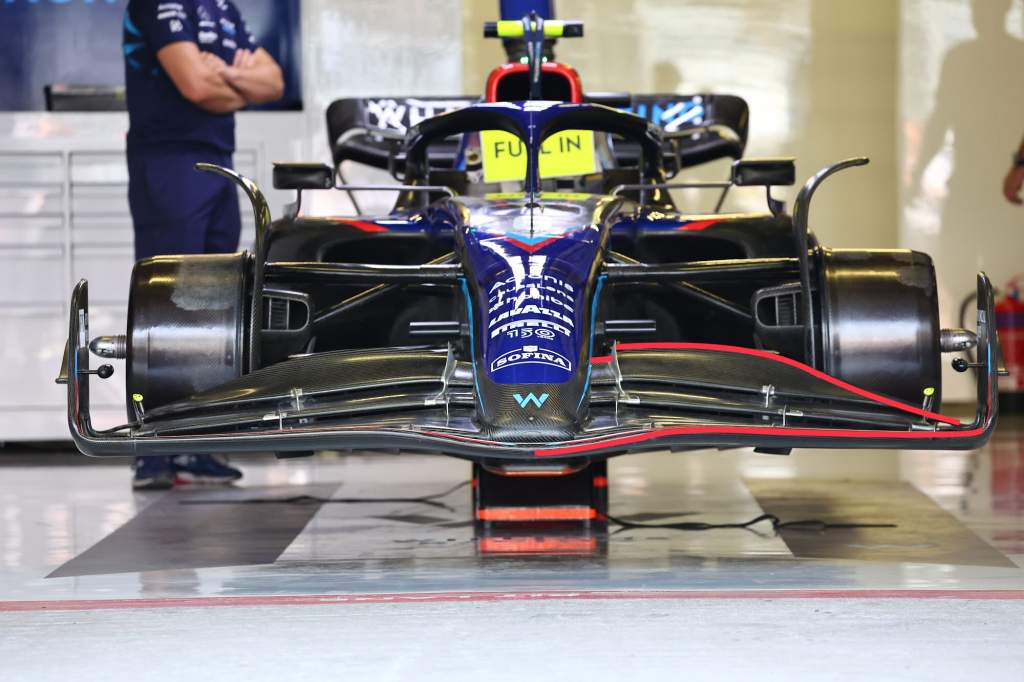
For Williams, or what is the skeleton of the Williams we all remember, it’s been a real fight these last few seasons.
At times with George Russell and now Alex Albon, there have been and still are moments of true brilliance, but I’m afraid it happens only too rarely.
Nyck de Vries showed with his great performance as a stand-in at Monza that the car is definitely efficient, but I’m afraid with that efficiency it lacks downforce.
But the front wing is not unlike Red Bull or Ferrari, so there are no major problems there.
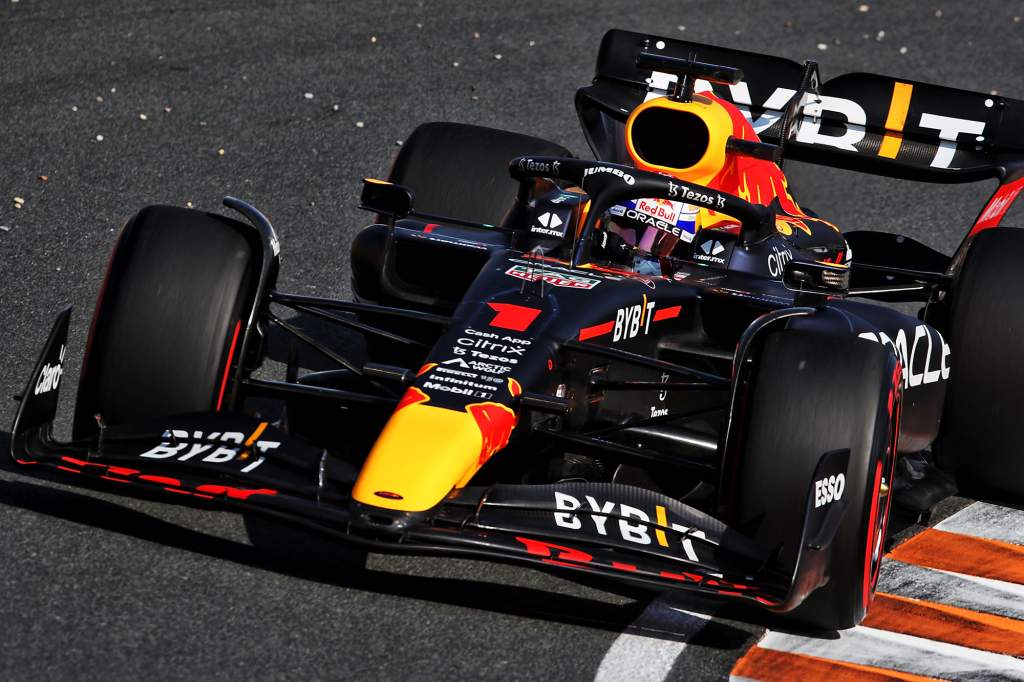
To sum up, all you can say is that the Red Bull is a car for all occasions. Whether the track is fast, slow, bumpy, smooth, wet or dry it seems that in Max Verstappen’s hands at least it can rise to the occasion.
It’s similar with Ferrari in Charles Leclerc’s hands. Are these two guys simply brilliant, or is it that the car is designed around them? For many seasons we had the debate of “was it Lewis Hamilton or was it the car that was bringing Mercedes’ success”? I think this season we are getting part of the answer.
Personally, I think it is a bit of both. You can’t blame any team for buying into what a driver is asking for if when you can give it to them, they go out and immediately use it.
I remember doing a test at a small circuit in France in preparation for Monaco. The driver came in after a 10-lap circuit familiarisation run complaining of massive understeer. We had a look around and discovered we still had the ‘travel’ front torsion bars fitted. These were incredibly stiff to stop the car bouncing around in the back of the truck.
So we fitted the correct stiffness torsion bars, he went back out and did more or less the same laptime and came in complaining of traction problems. Some people you can never satisfy, but the best drivers always produce the speed the car they are driving is capable of.
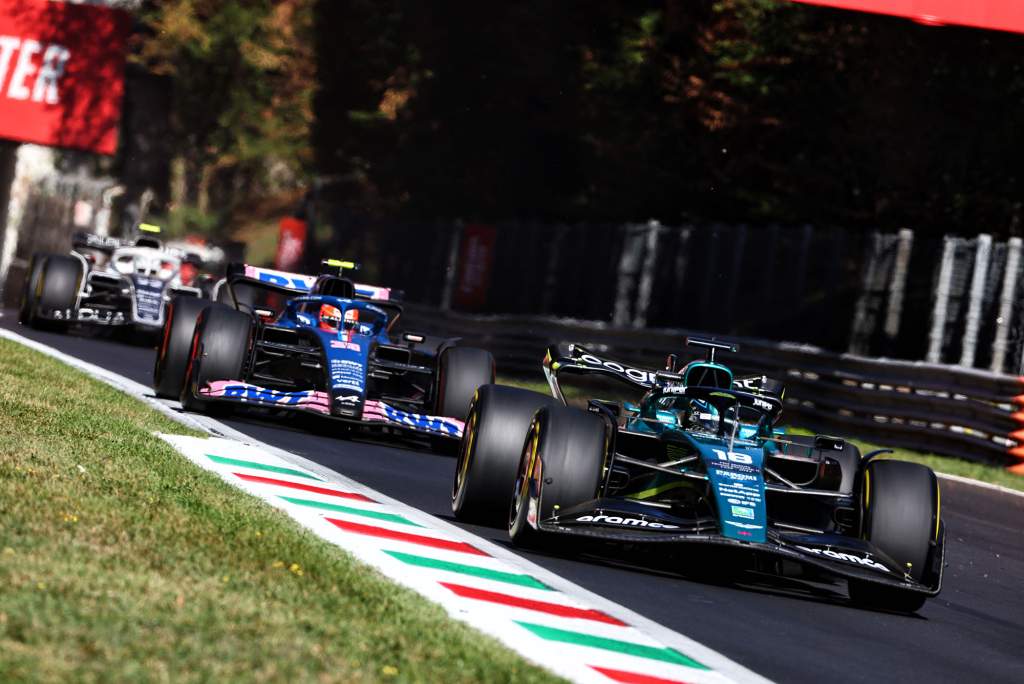
With these current stringent technical regulations performance is all in the detail but I’m pleased to see that the 10 teams have not arrived at the same visual concept.
Long gone are the days of a team doing something radical as today extracting the most from your concept is all about understanding what you are getting from what you have. That has proved more difficult with these new-for-2022 aerodynamic regulations.
To move forward, you need to recognise what is not giving you what you want, or at least what you think it should.


